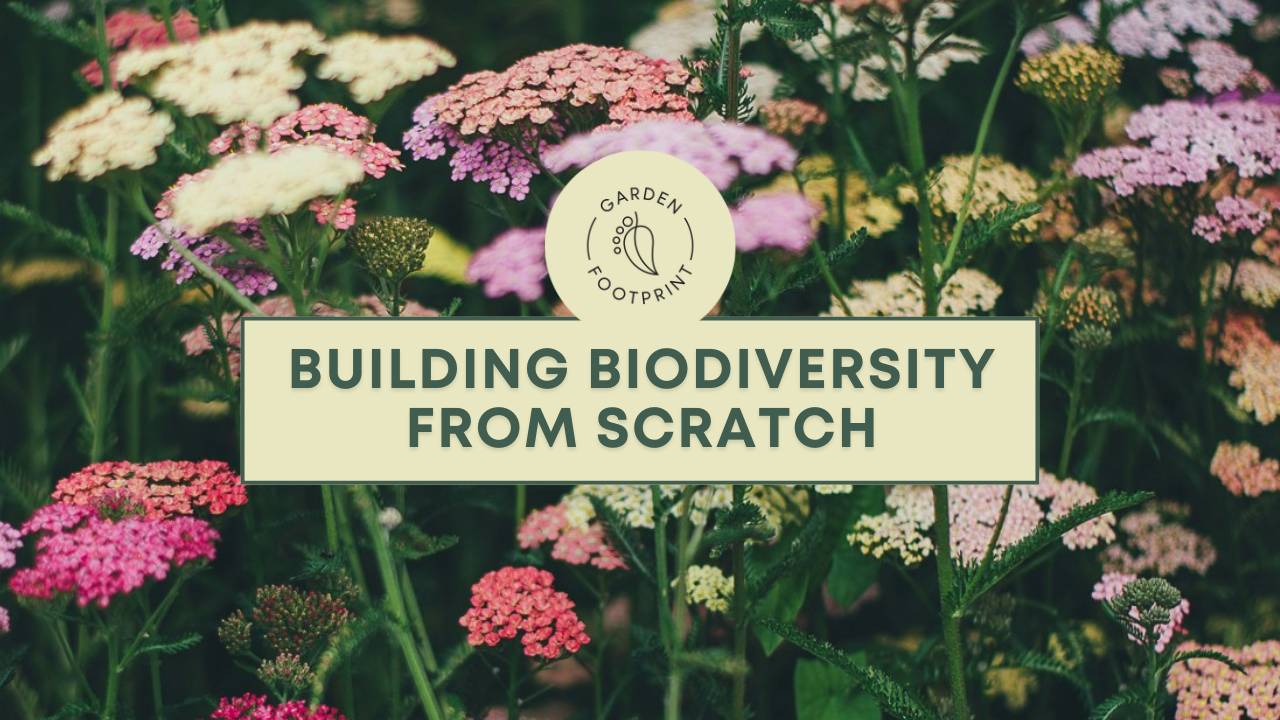
Building Biodiversity from Scratch
Oct 17, 2025Most new-build gardens begin life on compacted, low-nutrient subsoil. The topsoil has often been stripped away, leaving a surface that sheds water and repels roots. It’s hardly the Eden buyers imagine — yet it’s the perfect place to start again from nature’s point of view.
In ecology, recovery begins with pioneer species — tough, deep-rooted plants that break up soil, add organic matter and attract the first wave of insects and fungi back to the system. Think of them as nature’s groundwork team.
1. Start with the right pioneers
Certain plants have evolved to thrive in exactly these difficult conditions. They tolerate compaction, poor drainage and low fertility, slowly improving things for whatever follows.
If you want a guide on growing some of these, take a look at my free download - 'Plants that Love Newbuild Gardens'. A few reliable pioneers for new-build soils:
-
Achillea millefolium (Yarrow) – a deep-rooted, drought-tolerant plant that draws in hoverflies, bees and parasitic wasps. Loads of great colours available like the image for this blog!
-
Verbascum nigrum (Dark Mullein) – thrives in rubble and dry banks, providing nectar for long-tongued bees and shelter for moth larvae such as the mullein moth.
-
Leucanthemum vulgare (Oxeye daisy) – colonises disturbed ground, offering early pollen for solitary bees and hoverflies.
-
Centranthus ruber (Red valerian) – copes with near-sterile soil and walls, flowering for months and feeding butterflies like small tortoiseshells and red admirals.
-
Echium vulgare (Viper’s bugloss) – another classic pioneer, loved by bumblebees and honeybees for its high-sugar nectar.
-
Verbena bonariensis – not native but climate-resilient; it rises above compacted ground to form airy networks for butterflies and bees. In late summer, ours attracts the enigmatic Hummingbird Hawkmoth - they're my favourite garden visitor. In winter, they attract charms of goldfinches which is a very special sight!
2. Let the soil recover naturally
Pioneers don’t need rich compost or fertiliser. In fact, keeping things lean encourages strong root growth and slows weeds. Simply loosen the top few inches of soil, remove large rubble and plant directly — ideally in autumn or early spring. Their roots and associated soil fungi will do the rest. To aviod weeds taking over, mulch the surface of the soil with something like woodchip - low nitrogen, long lasting weed control.
Within a year, you’ll start seeing worms, ground beetles and self-sown seedlings appear — the early signs of a living soil returning.
3. Add structure and cover
Once these species have established, mix in ground-cover perennials (Stachys byzantina, Geranium sanguineum, Erigeron karvinskianus) and small shrubs (Cistus, Lavandula angustifolia, Santolina). These provide layers and long flowering seasons, offering nectar from early spring to late autumn.
4. Link gardens across the site
When every resident grows a few of these pioneers, each plot becomes part of a wider corridor for wildlife. Bees and butterflies move between gardens, soil organisms spread, and the whole development becomes more resilient to drought and flooding.
5. Make it easy for homeowners
One of the core aims of Garden Footprint is to help developers boost biodiversity long after handover by giving residents a simple starting point — not another policy document.
The Self-Sustaining Garden course includes full sections on soil recovery and habitat building, with planting lists tailored for poor, compacted ground. It turns biodiversity from a planning tick-box into something homeowners can actually enjoy doing.
Healthy soil doesn’t need to be imported — it can be rebuilt, plant by plant.
Biodiversity begins when the pioneers move in.
Garden Footprint's aim is to make gardens low-maintenance, beautiful and edible. Check out our courses to start your journey!
Stay in the loop with Garden Footprint updates from Mike
Don't worry, your information will not be shared.
We hate spam. We will never sell your information, for any reason.

